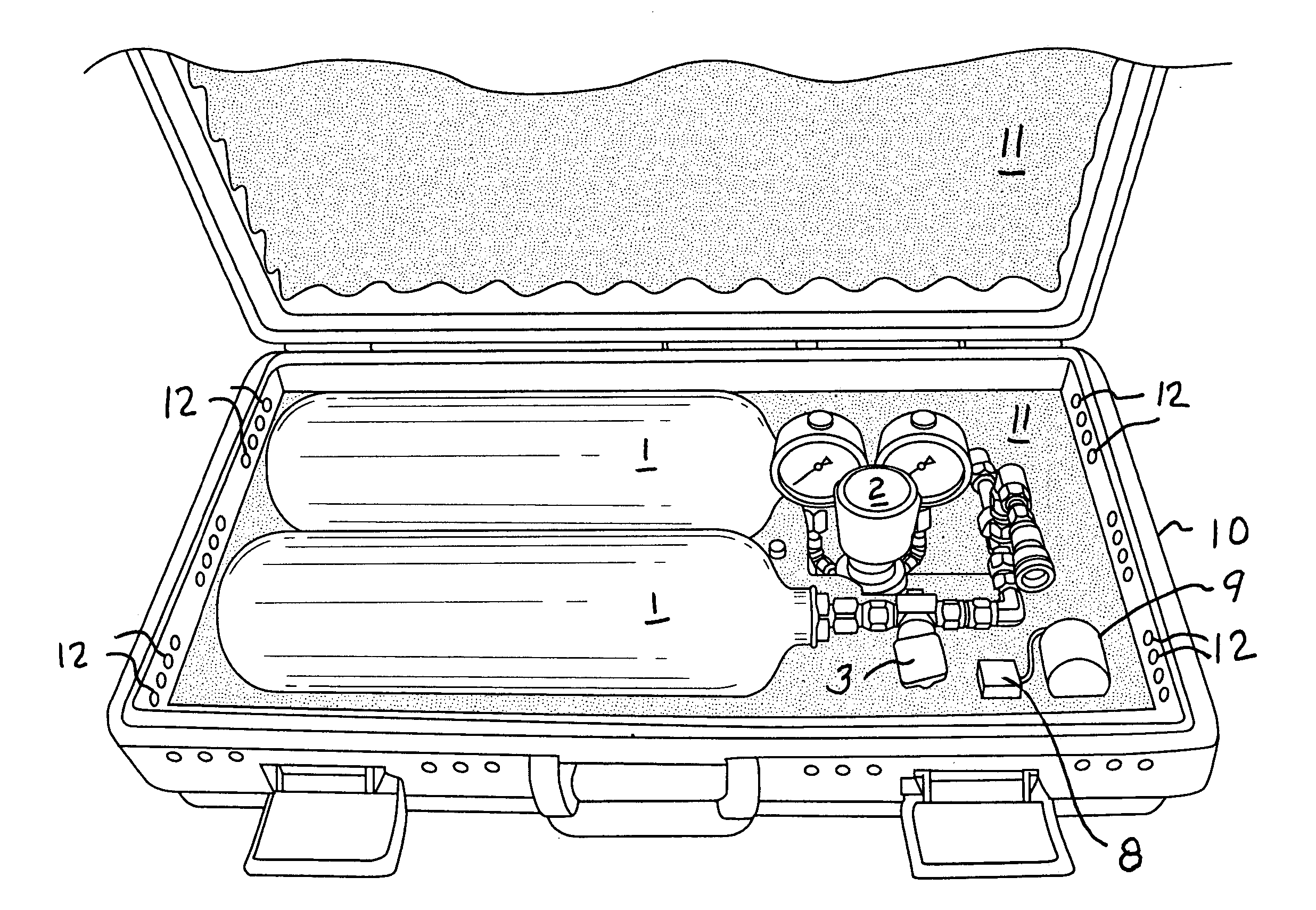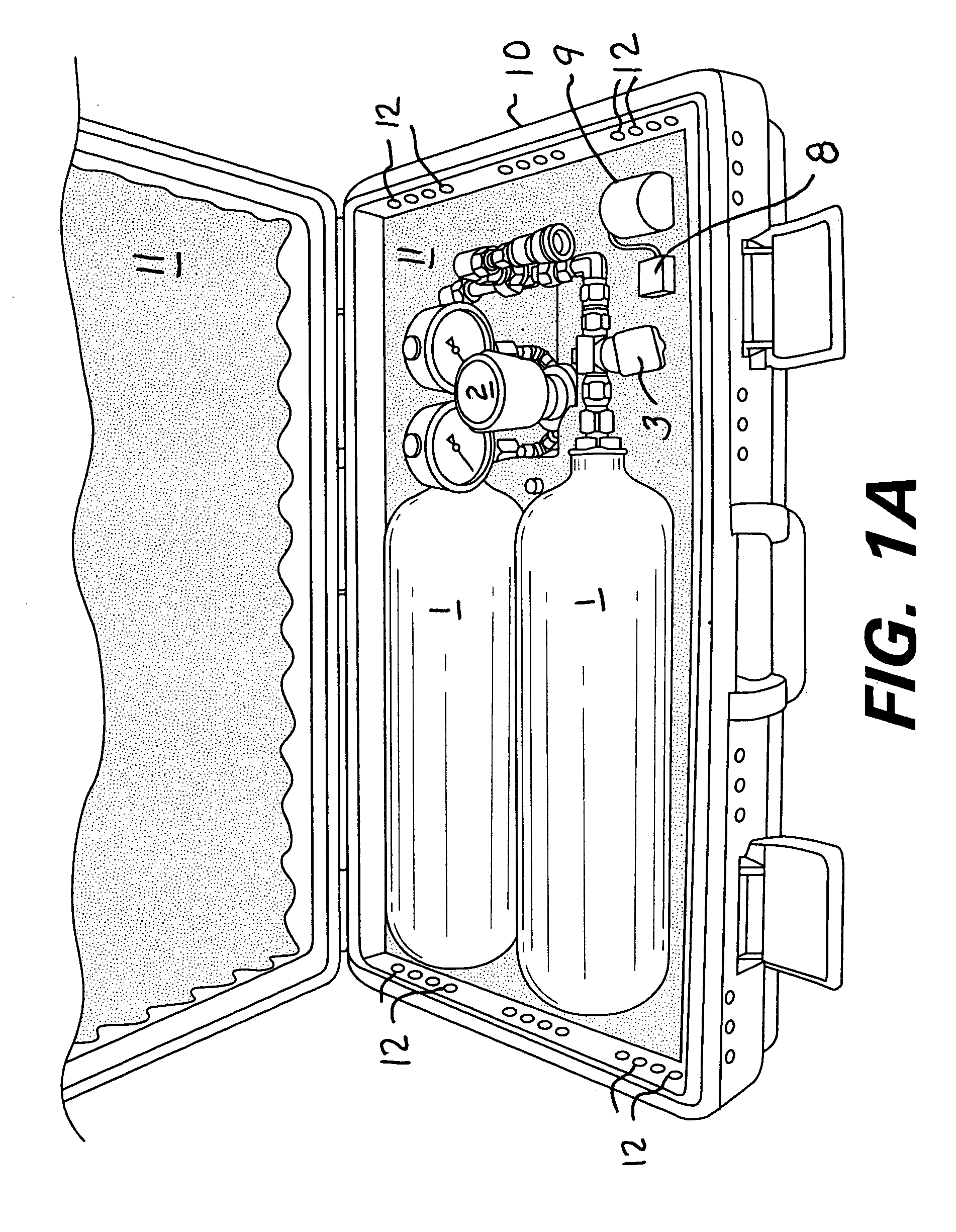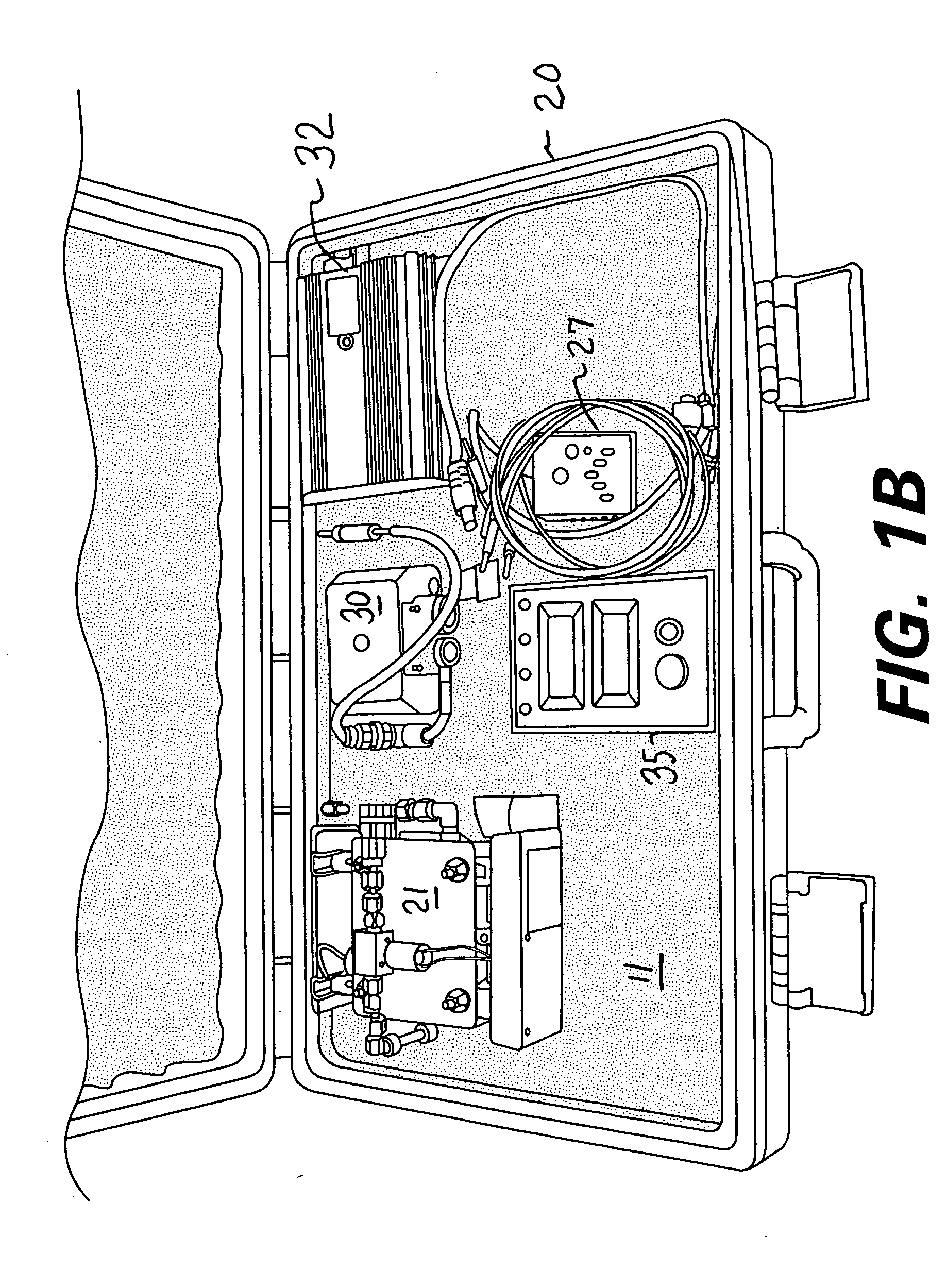Portable fuel cell power supply
- Summary
- Abstract
- Description
- Claims
- Application Information
AI Technical Summary
Benefits of technology
Problems solved by technology
Method used
Image
Examples
case 10
[0022] Case 10 preferably includes additional features to assure that undetectable leakage rate effects (i.e., approximately 0.125 cc / hour) do not raise the concentration of the hydrogen gas in the case above 0.8% by volume to air, which provides an ample margin of safety. This capability is provided by a multiplicity of ventilation holes 12 arrayed about the free-space volume between the upper and lower halves of case 10. These holes facilitate the unimpeded (free) circulation of air within the case envelope, and permit air exchange to occur at rates at or below 0.3 FPM, or approximately 0.3 SCFH. This is the equivalent of making a complete change in the volume of air contained within the case approximately once every four hours. Increasing the number of holes by a factor of two or more would allow a proportional increase in the overall design margin of safety.
[0023] Case 10 preferably provides a fully-integrated hydrogen supply system with all necessary connection interfaces neces...
case 20
[0031] Case 20 provides features to assure for the safe operation of the fuel cell stack under all operational conditions, by integration of failsafe hydrogen isolation valve 23 (FIG. 4) at the hydrogen inlet 22 (FIG. 2) of the fuel cell stack. A hydrogen sensor 27 in case 20 used during operation of the fuel cell (FIG. 4) senses hydrogen concentration levels, and a temperature sensor 41 detects temperature of the fuel cell stack (FIG. 4). If the level of detected hydrogen exceeds 1% by volume, or if the sensing of an over-temperature condition on the stack itself occurs, hydrogen supply to the stack will be completely isolated by isolation valve 23 to prevent any significant release of hydrogen directly into the environment. Additional safety features include overload sensing for either 12 VDC, 24 VDC or 115 VAC power generation in the inverter.
[0032] The power supply of the invention is capable of storing hydrogen gas at pressures of 3000 psig, with associated design pressure rati...
PUM
 Login to View More
Login to View More Abstract
Description
Claims
Application Information
 Login to View More
Login to View More - R&D
- Intellectual Property
- Life Sciences
- Materials
- Tech Scout
- Unparalleled Data Quality
- Higher Quality Content
- 60% Fewer Hallucinations
Browse by: Latest US Patents, China's latest patents, Technical Efficacy Thesaurus, Application Domain, Technology Topic, Popular Technical Reports.
© 2025 PatSnap. All rights reserved.Legal|Privacy policy|Modern Slavery Act Transparency Statement|Sitemap|About US| Contact US: help@patsnap.com



